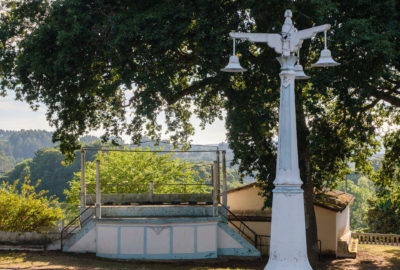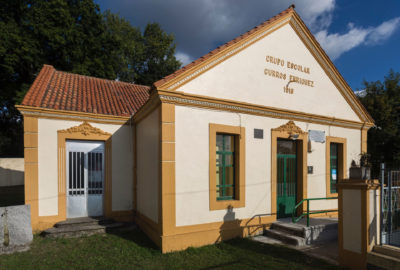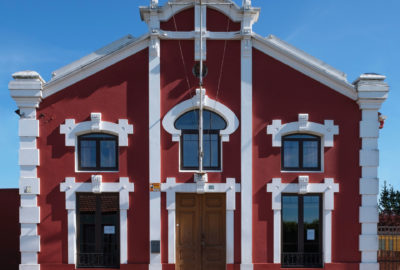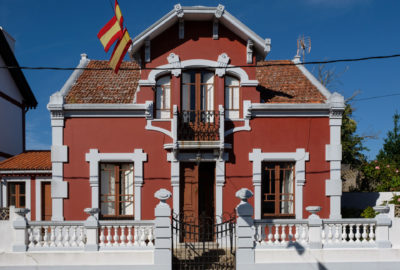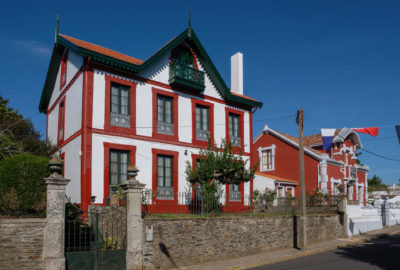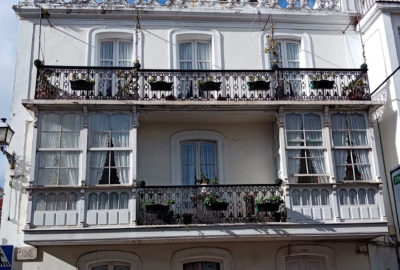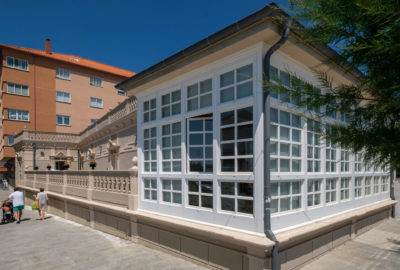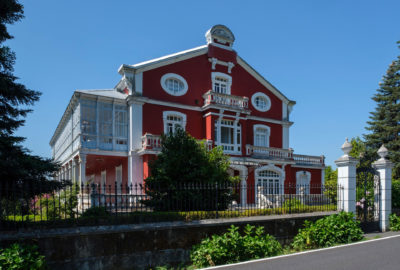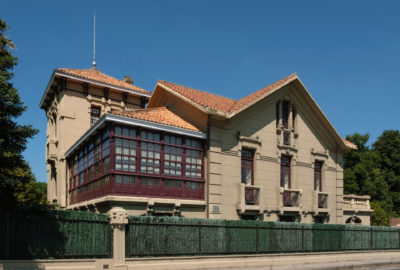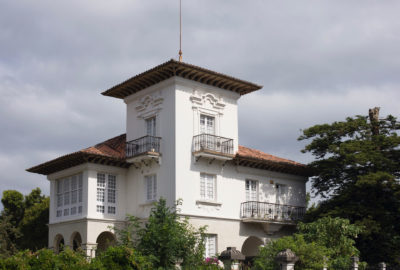THE INDIANO HERITAGE
EMIGRATION FROM THE FERROL AREA TO THE AMERICAS
Emigration is one of the phenomena that can most explain the contemporary history of Galicia and a key part of that chapter is from 1853, when a Royal Decree of September 16th legally authorized the departure of emigrants to overseas territories. The highest recipient countries were Argentina, Cuba and Uruguay and, to a lesser extent, the USA. One of the consequences of this diaspora that endured, with some variations, until the economic crisis of 1929 and due to the serious effects of the American economic implosion, was the decisive impact by returning emigrants on architecture in Galicia: the socalled INDIANO ARCHITECTURE. An “Indiano” was an emigrant who returned to Galicia after prospering financially in the Americas.
Located in rural areas and located chronologically in the first thirty years of the 20th century, Indiano architecture combines indigenous elements with other international trends such as historicism, modernism, eclecticism and rationalism. It also employed new building materials such as cast iron, cement, flat tile, zinc sheets, stuccoes, polychrome glass, ceramics, tiles and the inclusion of a garden with exotic tree species, such as araucaria, palm trees, magnolia and the yew.
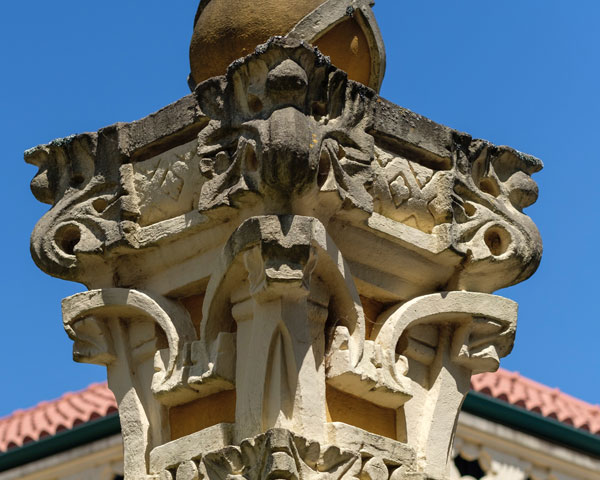
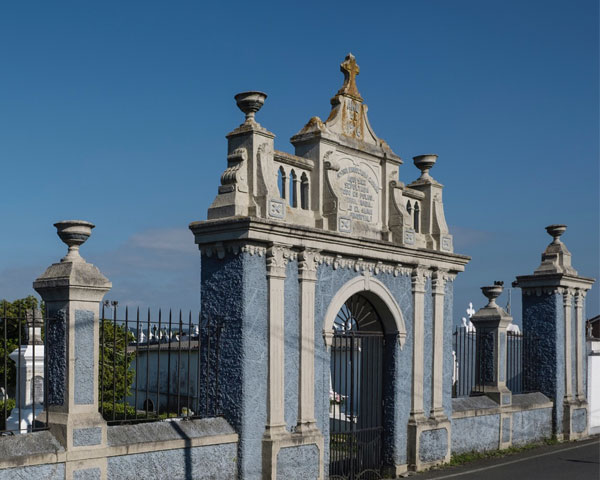
It was present throughout all the Ferrol region and especially in the Bezoucos Peninsula. It was an expression of the fortunes acquired in America in the form of buildings constructed in the indianos’ home vi- llages. It is visible in the numerous schools established by the Educational Societies and by distinguished indianos from Cuba and Argentina. It can be seen in the civil architecture of leisure, such as cinemas, clubs and dance halls. Due to the secular outlook often acquired by the indianos overseas, their impact on religious architecture is less notable, although there are examples, including those related to burial.
This Indiano architectural repertoire listed below represents a striking aspect of the identity and historical heritage of Fene, Mugardos, Ares and Cabanas, and includes other valuable examples in the Ferrol- Rías Altas region geodestination.
POINTS OF INTEREST
OF THE INDIANO ROUTE
Bibliography
To know more
ARES SANMARTÍN, M. “O Pote, 75 anos de sociedade”, Diario de Ferrol, 04-03-2001.
ARIAS REI, Mª X. Maniños no pasado, Pontedeume, Concello de Fene, 1994.
As Escolas da Emigración - Consello da Cultura Galega, mapas.consellodacultura.gal/escolas/datos_escola.php?cod_escls=302.
BELLO PLATAS, A. I. Pazo Libunca, (s. l.), Edicións Embora, 2014.
BURGOA, J. J. “Joaquín Jofre Maristany y Juan Sixto Vázquez”, Diario de Ferrol, 14- 07-2019.
CALVO TEIXO, L., VÁZQUEZ ANEIROS e ARIAS REI, Mª X. O cine na comarca de Ferrol.
CALVO TEIXO, L., VÁZQUEZ ANEIROS e ARIAS REI, Mª X. O cine na comarca de Ferrol.
CARNEIRO REY, J. A. e RAMIL GONZÁLEZ, E. “Catálogo de Patrimonio Cultural de Mugardos”, (s. l.), Concello de Mugardos, 2011.
CARNEIRO REY, J. A. e RODRÍGUEZ VÁZQUEZ, M. A. Historia de Mugardos, (s. l.), Reganosa- Concellería de Cultura de Mugardos, 2004.
Casas de Indianos (FERNANDO BORES GAMUNDI. COORD.), Santiago, Xunta de Galicia, 2000.
“El antiguo escolar de Piñeiro recupera la placa de la fundación”, La Voz de Galicia, 16-07-2018.
ELIAS, C. “Un viaje histórico por las casonas y pazos de Narón”, La Voz de Galicia, 02-03-2015.
“Fene se adentra en su pasado indiano con una ruta interpretativa por Maniños”, FERROL360, 14-08-2018.
FRA MOLINERO, E. “Orixe do cemiterio protestante de Ares”, FerrolAnálisis, nº 14, 1999.
LÓPEZ NAVEIRAS, E. “A Agrupación e o seu mundo. Unha institución exemplar”, A Tenencia. Agrupación Instructiva de Caamouco, nº 1, 1993.
LLORCA FREIRE, G. Centenario das Escolas de Instrucción dos “Naturales del Ayuntamiento de Fene” 1916-2016, A Coruña, Deputación da Coruña, 2018.
MÁIZ VÁZQUEZ, B. “Emigrantes retornados de acción en Ferrolterra e Eume (1898- 1936), Cátedra, nº 10, 2003.
MÁIZ VÁZQUEZ, B. O Seixo. Na Outra Banda da banda de Ferrol, 1730-1930, (s.l.), Edicións Embora, 2015.
PATO, S. “Casas indianas: nueve lugares para descubrir el pasado emigrante de Galicia”, La Voz de Galicia, 06-09-2018.
VV AA Indianos. Arquitectura da emigración na península de Bezoucos, Fene, COAG, 2000.





